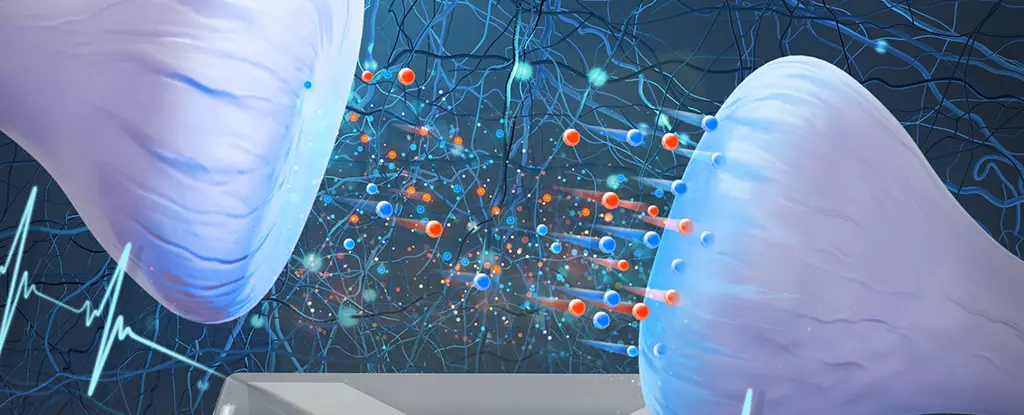In a groundbreaking new study, researchers have successfully simulated neurological junctions known as synapses using the same basic ingredients found in the human brain – water and salt. This innovative approach has paved the way for advancements in the field of iontronics, which aims to merge biology with electronics. By mimicking the brain’s utilization of ions dissolved in water to transmit signals within neurons, the team from Utrecht University in the Netherlands and Sogang University in South Korea have taken a significant step towards creating artificial systems that can replicate the complex capabilities of the human brain.
At the core of this research is the development of an iontronic memristor, a device that exhibits synapse-like behavior by ‘remembering’ previous electrical charge flow. This key feature, known as synaptic plasticity, enables neurons to adjust the strength of connections between them based on input history. The iontronic memristor, shaped like a cone and filled with a water and salt solution, measures just 150 by 200 micrometers – demonstrating the potential for compact and efficient electronic components inspired by biological systems.
By harnessing the principles of iontronics and synaptic plasticity, researchers are moving closer to creating computers that can not only mimic the communication patterns of the human brain but also operate using similar mediums. The ability of the iontronic memristor to replicate neuronal behavior and store information in the form of electrical charge variations opens up new possibilities for developing advanced artificial intelligence systems. This innovative approach offers a potential pathway towards enhancing the capacity and efficiency of computational systems through biological inspiration.
Although the development of iontronic memristors represents a significant advancement in the field of iontronics, there are still challenges to be addressed. The researchers acknowledge that this technology is in its early stages and further research is needed to explore the full potential of synthetic synapses. One area of interest is investigating how different channel lengths within the memristor can impact memory retention duration, allowing for customized designs tailored to specific tasks – mirroring the adaptability of the human brain.
The integration of water and salt-based iontronics into artificial synapse devices represents a major breakthrough in the intersection of biology and electronics. By closely emulating the mechanisms of the human brain, researchers are unlocking new possibilities for creating advanced computing systems with enhanced cognitive capabilities. The successful creation of iontronic memristors demonstrates the power of combining theoretical and experimental physics to push the boundaries of scientific innovation. As we continue to explore the potential of iontronics, we are moving towards a future where artificial intelligence systems can operate in harmony with biological principles, bringing us one step closer to unlocking the mysteries of the human brain.


Leave a Reply